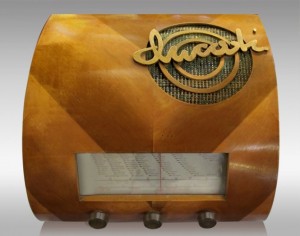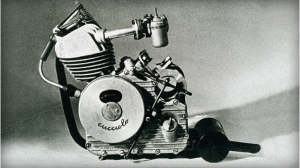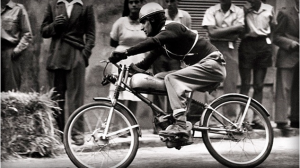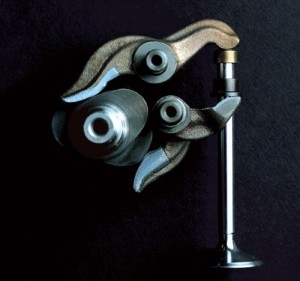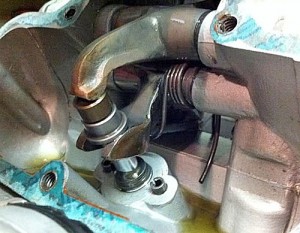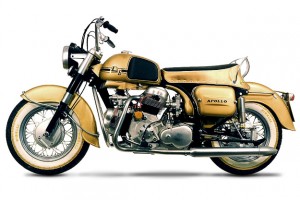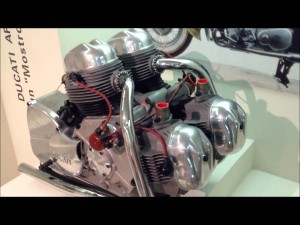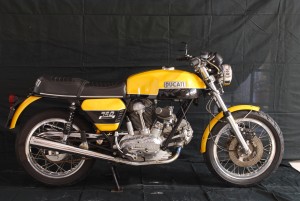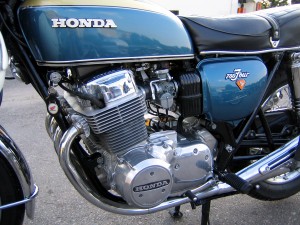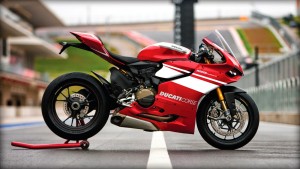The Ducati we know today, has no absolute relationship with Ducati of their beginning, talking about the 20s, specifically 1926, was not at all related to the world of motorcycles, even the world of motors of any kind; I mean the world of electronics of yesteryear, the radio; as close to our beloved Internet for nowadays .
You may wonder how is that this group of brothers ended (Adriano, Bruno and Marcello Ducati) in the world of motorbikes?
Then in the early 20s, radio was the new sensation and these brothers, of mechanics of competition had nothing, quite the contrary, one was an architect and the rest of them amateur of this technology, which incidentally, the idea was not entirely thought them, was from their father and his sons led to the burgeoning industrial level in Italy of old times. Then with the advent of World War II and Italy to the hand with Benito Mussolini, large factories were objectives of Allied bombing and Ducati not escape this classification; Ducati was forced to build military equipment. But this is not surprising in history, because we couldn’t imagine the incredible twists of fate, that Ducati was awarded a concession to build engines that had been granted to SIATA by IRI (Istituto per la Ricostruzione Industriale) for failing to finish the production, IRI transferred the concession to Ducati, of the few industries still standing after the war that could take over, and almost reluctantly had to made the twist to attach its infrastructure to manufacture engines SIATA, here comes the famous “Cucciolo” (puppy) Ducati, which was no more than a bicycle with a motor of 48 cc 4 stroke.
How’s start the desmodromic system Ducati?
By 1950 the engineer Fabio Taglioni and amateur racing driver, knew that was needed increasingly raise the rpm, it is when he take the desmodromic distribution as a key feature for its engines; You might wonder, desmodromic whaaat ?!, well as many interesting words coming from Greek, Desmos dromos means “controlled movement” is mechanically assumed here that also the cylinder slotted in the gearbox be called “desmodromic drum” precisely because it is mechanically controlled movement. Was this distribution system which gave Ducati its characteristic power, generating as much or more than a couple inline-4 engine, using only two pistons.
Basic operation of a desmodromic distribution:
Unlike the conventional system used by all motorcycles, consisting of rods and springs for opening and closing the valves, these engines (Ducati) use a purely mechanical control system, the same camshaft cam with rockers make work.
With this system (desmodromic)the work opening and closing of the valves is much more direct and efficient than with springs and rods, further, eliminates the problem of “floating spring” that japanese engines suffering of at high RPM, to get in “resonance”. With the desmodromic system it is impossible to happen. It is also true that it is more expensive in terms of production and more critical in tuning and adjusting valves.
Ducati vs Harley?
Wasn’t at race tracks that the faces of these two factories saw each other, but by the struggle of a government concession for police motorcycles in North America; Ducati design only two prototypes called: Ducati Apollo, was a real junk of 250 Kg V4 1,257 cc and 100hp … but what happened? Impossible to drive such a machine, the tire market had not developed anything for this type of bikes, Ducati was trying to lose 65 hp, but it didn’t work and Harley win this war of factories. By the way, used to winning, was Harley which won the concession for the construction of motorcycles for the US Army for World War II, defeating his enemy of the time, the famous Indian, lost that cost to the brand the bankruptcy.
Why Ducati changed the single-cylinder engine to two-cylinder engine?
By the decade of the 70’s, the fame of the “Big Bikes” was growing and it was HONDA with the CB 750 4 inline, which slapped the Italian factory in terms of sales, was when Fabio Taglioni in His mastery of design and mechanics create an authentic Ave Fenix born from the ashes of the failed Apollo project. Taking advantage of the disaster plans with Ducati Apollo, of enormous power, took this engine and modified to V2, created the famous Ducati 750 GT, a V2 engine housed 100 HP at 90 degrees longitudinally, could achieve speeds up to 240 km / h.
Now … after what you’ve read …
Do you think that the father of the Ducati’s brothers would be surprised ?, the radical change in producing radios, finally ended with the producing one of the fastest and most beautiful machines on two wheels…that’s what i called…Destiny!
